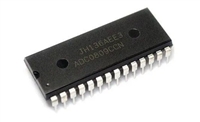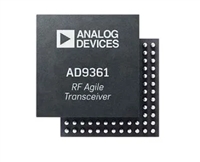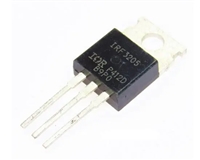ADVANCE INFORMATION
CYWB0224ABS/CYWB0224ABM
cation with the processor, which may have other devices
connected on a shared memory bus. Asynchronous accesses
can reach a bandwidth of up to 66.7 MBps. Synchronous
accesses are performed at 33 MHz across 16 bits for up to 66.7
MBps bandwidth.
Functional Overview
The SLIM™ architecture
The Simultaneous Link to Independent Multimedia (SLIM)
architecture allows three different interfaces (P-port, S-port and
U-port) to connect to each other independently.
The memory address is decoded to access any of the multiple
endpoint buffers inside Astoria. These endpoints serve as buffers
for data between each pair of ports, for example, between the
processor port and the USB port. The processor writes and reads
into these buffers through the memory interface.
With this architecture, a device using Astoria is connected to a
PC through a USB, without disturbing any of the functions of the
device. The device can still access Mass Storage when the PC
is synchronizing with the main processor.
Access to these buffers is controlled by using a DMA protocol or
using an interrupt to the main processor. These two modes are
configured by the external processor.
The SLIM architecture enables new usage models, in which a
PC accesses a Mass Storage device independent of the main
processor, or enumerates access to both the Mass Storage and
the main processor at the same time.
As a DMA slave, Astoria generates a DMA request signal to
notify the main processor that a specific buffer is ready to be read
from or written to. The external processor monitors this signal
and polls Astoria for the specific buffers ready for a read or write
operation. It then performs the appropriate read or write
operations on the buffer through the processor interface. As a
result, the external processor only deals with the buffers to
access a multitude of storage devices connected to Astoria.
In a handset using SLIM architecture, the user can do the
following:
■ Use the phone as a thumb drive.
■ Download media files to the phone with all the functionalities
still available on the phone.
■ Use the same phone as a modem to connect the PC to the
internet.
In the Interrupt mode, Astoria communicates important buffer
status changes to the external processor using an interrupt
signal. The external processor then polls Astoria for the specific
buffers ready for read or write, and it performs the appropriate
read or write operations through the processor interface.
8051 Microprocessor
The 8051 microprocessor embedded in Astoria does basic
transaction management for all transactions between the P-Port,
S-Port, and the U-Port. The 8051 does not reside in the data
path; it manages the path. The data path is optimized for
performance. The 8051 executes firmware that supports NAND,
SD, SDIO, MMC+, and CE-ATA devices at the S-Port. For the
NAND device, the 8051 firmware follows the Smart Media
algorithm to support the following:
USB Interface (U-Port)
In accordance with the USB 2.0 specification, Astoria can
operate in Full-Speed USB mode in addition to High-Speed USB.
The USB interface consists of the USB transceiver. The USB
interface can access and be accessed by both the P-Port and
the S-Port.
The Astoria USB interface supports programmable
CONTROL/BULK/INTERRUPT/ISOCHRONOUS endpoints.
■ Physical to Logical Management
■ ECC Correction support
■ Wear Leveling
Mass Storage Support (S-Port)
The S-Port may be configured in three different modes, which
simultaneously support the following:
■ NAND Flash bad blocks handling
Configuration and Status Registers
■ An SD/SDIO/MMC+/CE-ATA port and a x8 NAND port
■ Two SD/SDIO/MMC+/CE-ATA ports
The West Bridge Astoria device includes configuration and
status registers that are accessible as memory-mapped
registers through the processor interface. The configuration
registers allow the system to specify some behaviors of Astoria.
For example, it can mask certain status registers from raising an
interrupt. The status registers convey the status of Astoria, such
as the addresses of buffers for read operations.
■ Up to eight Chip Enable (CE#) for x8 or x16 NAND flash access
port
These configurations are controlled by the 8051 firmware. The
16-bit NAND interface is used only when there is no other Mass
Storage device connected to the S-Port.
Processor Interface (P-Port)
N-Xpress NAND Controller (S-Port)
Communication with the external processor is realized through a
dedicated processor interface. This interface is configured to
support different interface standards. This interface supports
multiplexing and nonmultiplexing address or data bus in both
synchronous and asynchronous pseudo CRAM-mapped, and
nonmultiplexing address or data asynchronous SRAM-mapped
memory accesses. The interface may be configured to pseudo
NAND interface to support the processor’s NAND interface. In
addition, this interface may be configured to support the slave
SPI interface. This ensures straightforward electrical communi-
Astoria, as part of its Mass Storage management functions, can
fully manage the SLC and MLC NAND flash devices. The
embedded 8051 manages the actual reading and writing of the
NAND, along with its required protocols. It performs standard
NAND management functions, such as ECC and wear leveling.
The Astoria supports single bit ECC for the SLC and 4-bit ECC
for MLC NAND flash. SLC NAND flash devices are supported by
CYWB0244ABS. CYWB0244ABM supports both SLC and MLC
NAND flash devices.
Document #: 001-11710 Rev. *A
Page 2 of 6
[+] Feedback






 SI2301 N沟道MOSFET:资料手册参数分析
SI2301 N沟道MOSFET:资料手册参数分析

 ADC0809逐次逼近寄存器型模数转换器:资料手册参数分析
ADC0809逐次逼近寄存器型模数转换器:资料手册参数分析

 AD9361捷变收发器:全面参数解析与关键特性概览
AD9361捷变收发器:全面参数解析与关键特性概览

 IRF3205功率MOSFET:资料手册参数分析
IRF3205功率MOSFET:资料手册参数分析
